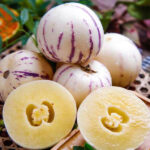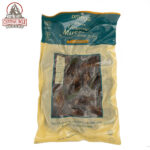Leyda Valley
Leyda Valley is a small sub-region of the San Antonio Valley wine region in Chile, located just 55 miles (90km) west of the Chilean capital, Santiago. This cool-climate region enjoys the effects of the cold Humboldt Current of the Pacific Ocean, and consequently produces bright, vibrant wines made from Pinot Noir and Chardonnay. The region is also responsible for excellent examples of Sauvignon Blanc and Syrah.
Leyda Valley has traditionally been associated with wheat and barley production, but is rapidly gaining a reputation among wine critics and consumers for high-quality viticulture. The first vignerons appeared in Leyda in the late 1990s, attracted by a terroir that was almost perfect for the production of premium grapes, save for the lack of an abundant source of water for irrigation. A significant investment by a wine-producing family in the area saw the construction of a pipeline five miles (8km) long to channel water from the Maipo River in the south. This opened a world of potential in the area, but the planting of new vineyards has since been limited by the capacity of this pipeline.
The region sits on a set of rolling hills on the seaward side of the coastal range that protects much of central Chile from oceanic influences. It is just south of the cool-climate wine region of Casablanca Valley, and the sizable Maipo Valley lies to the east. The Pacific coast is eight miles (12km) west of Leyda Valley.
This close proximity to the coast is what is driving growers to Leyda. Cold ocean breezes and morning fog moderate the overall temperatures, and the valley is therefore significantly cooler than its low latitude might suggest. These cool temperatures are complemented by warm sunshine during the long growing season, letting grapes ripen fully and develop complexity while still retaining acidity.
Leyda Valley’s soils are largely clay and loam over a granite base with moderate drainage. These low-fertility soils are good for the production of premium grapes because they make the vines struggle for survival. This results in vines that put all their energy into producing small, concentrated grapes rather than leafy foliage. Wines produced from these grapes tend to be structured and complex.
Showing all 6 results











